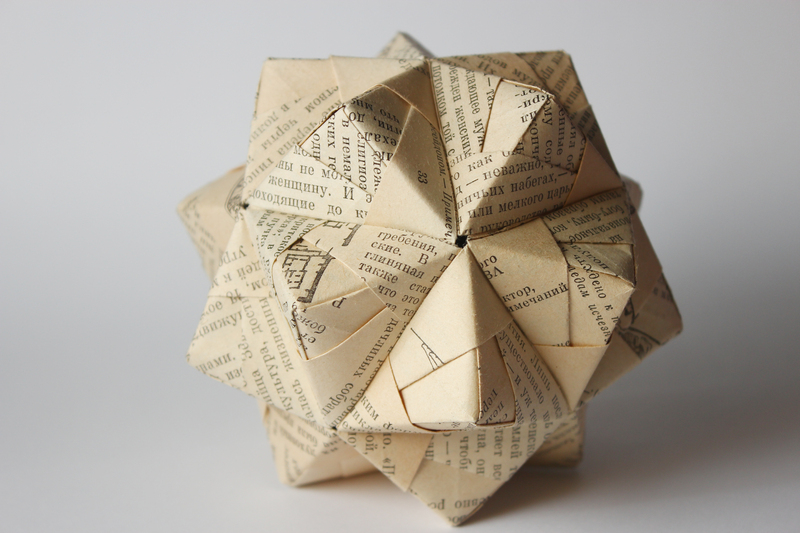Environmentally Sound Ways to Dispose of Pots and Pans
Disposing of old kitchenware is a challenge many face as their cookware ages or their culinary preferences change. Pots and pans, typically made of metals like stainless steel, aluminum, or cast iron, or nonstick materials, pose unique challenges in waste management. Environmentally sound ways to dispose of pots and pans are important to reduce landfill waste, conserve natural resources, and lower your environmental impact. This comprehensive guide explores all available methods, tips, and best practices for kitchenware disposal that protect the planet.

Why Responsible Disposal of Cookware Matters
Before we delve into the actual steps for discarding pots and pans in a green-minded way, it's essential to understand why responsible disposal is necessary. Most pots and pans are composed of valuable materials, including steel, copper, and aluminum, that are infinitely recyclable. Nonstick coatings, however, can complicate the recycling process and may contain chemicals unsuitable for landfill. Disposing of pots, pans, and other cookware irresponsibly can have the following negative impacts:
- Waste accumulation: Non-degradable materials contribute to landfill growth and pollution.
- Resource wastage: Metals can be recycled; throwing them away squanders resources.
- Environmental hazards: Nonstick coatings and other chemical treatments may leach into soil or groundwater.
- Economic impact: Recycling metals saves significant energy and costs compared to mining new ore.
How Long Does Cookware Last?
Determining when to replace and recycle pots and pans depends on their type (e.g. nonstick, stainless steel). Properly cared for, stainless steel pans can last a lifetime, while nonstick pans often need replacement every 3-5 years due to coating degradation. Recycling or repurposing them at the end of their useful life ensures minimal environmental harm.
Assessing the Condition of Your Pots and Pans
Before you dispose of kitchen pots and pans, consider if they are truly at the end of their useful life. Many cookware items can be repaired, donated, or repurposed before resorting to recycling or disposal.
- Check for usability: Are handles still secure? Is the coating peeling or scratched?
- Nonstick degradation: If the surface is flaking or worn, avoid using for food but consider other uses.
- Rust or holes: Cast iron with surface rust can often be restored; severe damage may warrant disposal.
Questions to Ask Before Disposing of Cookware
- Is the item still functional for cooking?
- Could it be given away, repaired, or reused in another way?
- Are there recycling centers or scrap metal yards nearby?
- Do any local groups accept used cookware donations?
Best Environmentally Friendly Ways to Dispose of Pots and Pans
1. Donate Gently Used Cookware
If your pots and pans are still safe and functional, donating is the most sustainable and socially beneficial option. By prolonging their use, you reduce demand for new cookware production and help those in need.
- Charities: Many thrift stores and charitable organizations, like Goodwill, The Salvation Army, and local shelters, accept clean and usable cookware.
- Community kitchens: Soup kitchens or transition home kitchens may welcome kitchen donations.
- Neighbors and friends: Local Buy Nothing groups or online exchanges such as Freecycle and Facebook Marketplace facilitate peer-to-peer giving.
2. Sell or Swap Your Pots and Pans
If your kitchen items still have value, consider selling or swapping them through online platforms or community markets. Not only do you extend their lifespan, but you also reduce waste and recoup some costs.
- Online classified ads: Platforms like Craigslist, Facebook Marketplace, and OfferUp are excellent for resale or swapping.
- Garage sales: Host or join a neighborhood yard sale to move multiple items at once.
- Community swaps: Some localities host kitchenware trading events or "swap meets."
3. Repurpose Old Pots and Pans
Creatively reusing cookware saves them from the waste stream. Turn worn-out pots and pans into planters, birdbaths, storage containers, or art.
- Garden planters: Drill drainage holes, fill with soil, and plant flowers, herbs, or succulents.
- Craft projects: Use as the base for a clock, candle holder, or unique wall display.
- Organizers: Repurpose shallow pans as drawer organizers or catch-all trays.
- Kids' play kitchens: Old (clean) cookware can stock a pretend kitchen for children.
4. Recycle Metal Cookware Responsibly
For pots and pans that are no longer usable, recycling is the next best step. Most cookware is composed of metals that are highly recyclable, including stainless steel, cast iron, copper, and aluminum.
- Check your local recycling rules: Not all municipal curbside programs accept cookware due to their size, shape, and mixed materials (handles, coatings). Contact your local recycling center to ensure acceptance.
- Drop-off at scrap metal yards: Scrap yards typically accept most types of metal cookware. Remove non-metal parts (e.g., plastic handles, glass lids) if possible. You may even get paid for certain metals, such as copper or aluminum.
- Separate materials: Dismantle pans with mixed materials since some recycling facilities only accept certain types of metals.
- Specialty recycling programs: Some manufacturers and retailers offer take-back or mail-in programs for old cookware. Brands like Tefal (T-fal) and some kitchen stores may recycle certain brands or materials.
5. Proper Disposal of Nonstick and Coated Cookware
Nonstick cookware features PTFE (Teflon) or ceramic coatings that complicate recycling. Most facilities require removal of chemical coatings, which is often impractical at home, so these pieces require special disposal consideration.
- Check with your municipality: Some areas have hazardous waste programs that accept nonstick cookware.
- Mail-back programs: Some eco-conscious manufacturers now offer take-back recycling for their own products.
- Landfill as a last resort: If you have no access to recycling or mail-back options, place the cookware in your regular trash--never in recycling bins. Confirm with your local waste management service first.
Green Tips for Cookware Disposal
Remove Non-Metal Components
Whenever possible, disassemble pots and pans. Remove plastic handles, glass lids, or rubber components so the metal can be recycled. Non-metallic pieces should be disposed of properly or reused.
Clean Before Disposal
Wash and scrub out stubborn residue. Clean metals are preferred by scrap yards and help prevent contamination in the recycling process.
Contact Your Local Waste Authority
Every city or county has specific rules for recycling and hazardous waste. Consult their website or hotline for precise instructions regarding the disposal of cookware.
What to Do with Glass Lids
While most pots and pans are metal, their lids are often tempered glass. These lids typically can't be recycled in standard curbside programs (since they're not regular container glass) but may be accepted at specialized facilities. Your options include:
- Donation: Donate matching lids with cookware or separately if in good condition.
- Reuse: Glass lids make excellent covers for serving dishes, potting in the garden, or as bases for craft projects.
- Disposal: If recycling is not available, wrap in newspaper and place in trash as a last resort.
How NOT to Dispose of Cookware
- Do not place non-metal cookware in metal recycling bins.
- Never incinerate coated cookware or plastics, as they release toxic fumes.
- Do not dump old pots and pans in the wild or waterways.
- Avoid contributing to illegal dumping sites or unsanctioned e-waste piles.
FAQs About Environmentally Friendly Disposal of Pots and Pans
- Can you recycle nonstick pans?
- Most municipal programs do not accept nonstick cookware due to the chemical coatings, but specialty recycling centers or mail-back programs may. Always check your local regulations first.
- Can you put old pots and pans in the recycling bin?
- Generally, no. Pots and pans are often too large, heavy, or have mixed materials that prevent curbside recycling. Bring them to a dedicated scrap metal recycling center instead.
- What do I do with broken handles or damaged lids?
- Attempt to remove and recycle them (if metal) or otherwise dispose of them according to local guidelines. Plastic or wooden handles are not usually recyclable but can be repurposed.
- Are there eco-conscious brands that offer cookware recycling?
- Yes! Some manufacturers now offer take-back services, mail-in recycling, or discounts on new purchases for returning old cookware. Always research or contact the manufacturer directly.

Innovative Approaches & Future Trends
Manufacturer Take-Back Programs
A growing number of companies have launched recycling or take-back programs for cookware:
- Calphalon(R) offers a recycling program for nonstick pans.
- GreenPan(R) and other eco-friendly brands may accept old pans when buying new ones from them.
- Retail drop-offs: Some home goods stores collect old cookware regardless of brand.
Circular Design and Eco-Friendly Cookware
Manufacturers are innovating with sustainable materials and modular designs, making it easier to replace parts and recycle cookware at end-of-life, creating a more circular economy for kitchenware.
Community Workshops and Upcycling Events
Check for local "fix-it" clinics, upcycling workshops, or recycling events aimed at household goods like cookware. Community collaboration is a powerful force for sustainability.
Conclusion: Every Pan Has a Purpose--Even at the End
In summary, environmentally sound ways to dispose of pots and pans are more accessible than ever before. Whether you donate, recycle, repurpose, or use manufacturer take-back programs, you can feel great knowing your kitchenware is getting a new life and avoiding the landfill. By making green choices in cookware disposal, you protect natural resources, reduce pollution, and inspire others to minimize waste--one pot or pan at a time.
- Donate if the cookware is still usable.
- Reuse or upcycle for non-culinary purposes.
- Recycle at dedicated scrap metal facilities.
- Dispose responsibly only as a last resort and according to local rules.
Every green step counts. If everyone practiced environmentally responsible disposal of kitchenware, the global environmental impact would be profound. Spread the word and set an example--your old pot may be someone else's prized possession, a new plant's home, or tomorrow's recycled resource.
